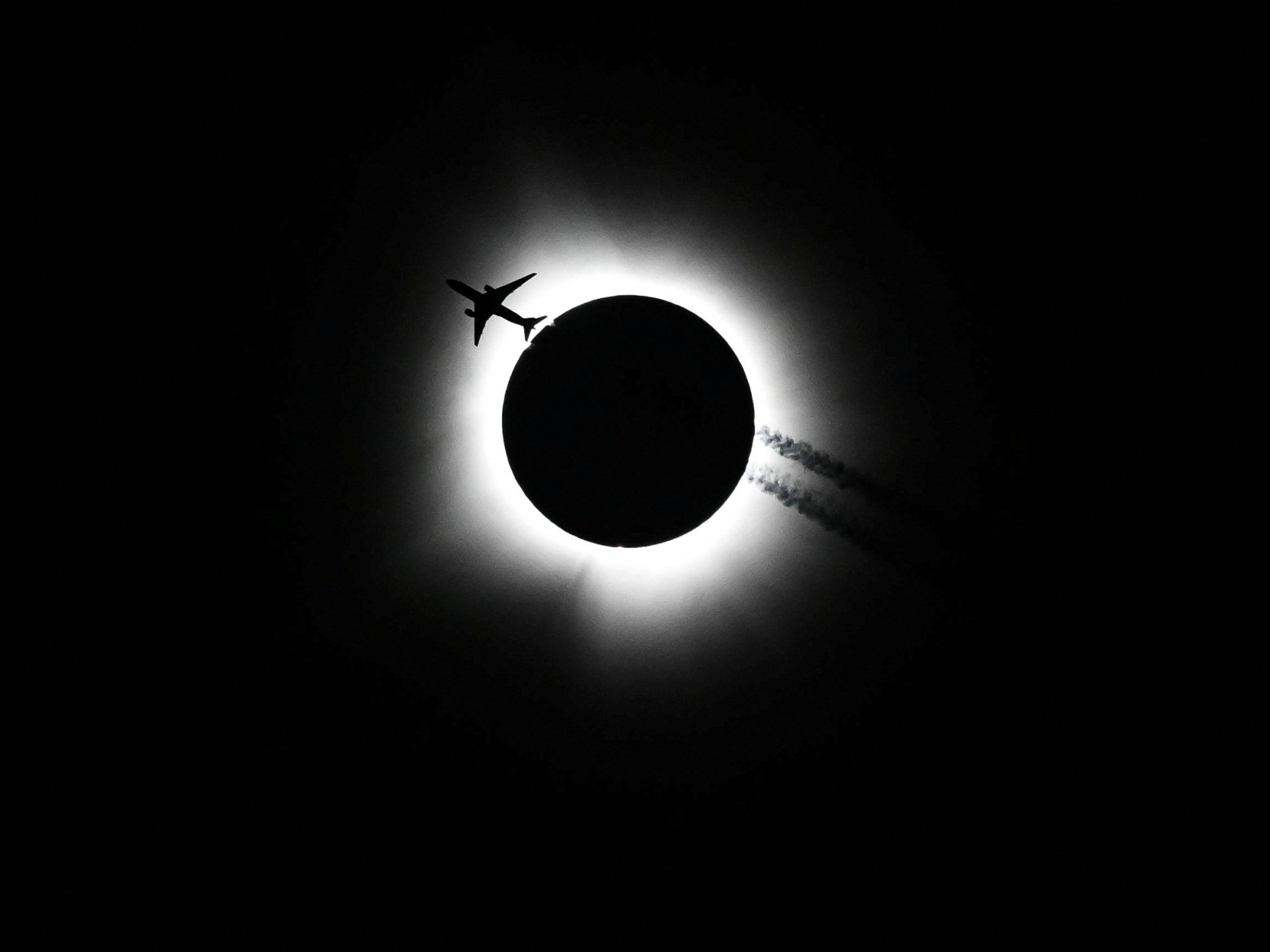A total annular solar eclipse appeared in the skies of the North American continent (Reuters)
In a special astronomical event, a total solar eclipse occurred yesterday, Monday, April 8, and appeared in the sky of the North American continent. The path of the eclipse begins from the Pacific Ocean, passes through Mexico, America, and Canada, and finally ends in the Atlantic Ocean near the United Kingdom.
A total eclipse occurs when the moon passes between the Earth and the sun, and the moon blocks the sunlight, so that the moon's shadow appears on the Earth. Due to the sudden absence of sunlight, the area under the moon's shadow is subject to pitch darkness for a period of time.
Several organizations celebrated the distinguished astronomical event, led by NASA, whose fans gathered in several areas along the line of the eclipse.
Live coverage of the event was from the Great Lakes Science Center in Ohio, far north, while several reporters were in attendance in other cities such as Dallas and Niagara Falls.
Female students from the University of South Carolina follow the eclipse using special glasses (French)
It is also the first time since 2017 that the astronomical event will be watched by about 32 million people in the region, and it will be their last time until the next total eclipse in mid-2044.
The eclipse is not a rare astronomical event, but the path of this eclipse, which crosses the North American continent, passing through several densely populated areas, makes it a special event and may be one of the experiences that only happens once in a lifetime.
The phenomenon of the eclipse includes the occurrence of several other phenomena, including the phenomenon of Bailey's beads or the diamond ring effect, where sunlight flows and penetrates through the edges of the moon's craters, so small beads of light shine at the edges of the moon a few seconds before the total eclipse is complete.
Source: Al Jazeera

